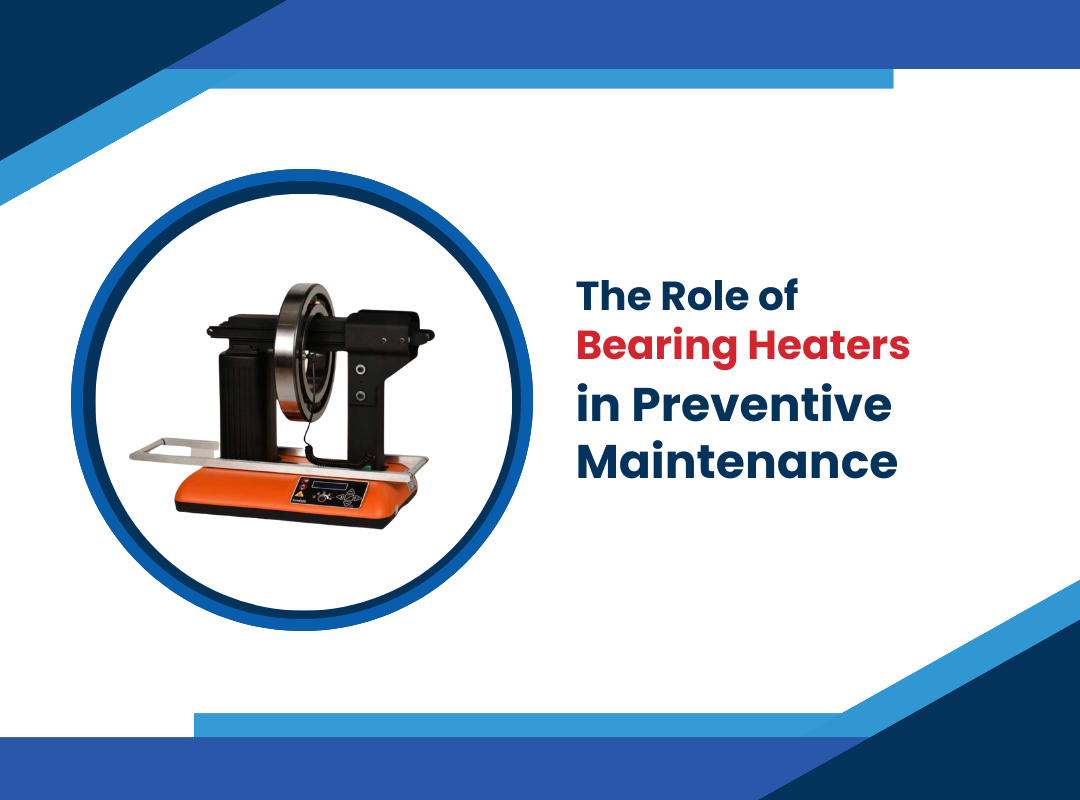Bearings are crucial in rotating machinery like motors, pumps, fans, and gearboxes. They allow shafts and axles to spin smoothly, supporting the load while minimizing friction. But when bearings fail, the results are catastrophic – leading to unplanned downtime, lost production, safety risks, and significant repair or replacement costs.
An ounce of bearing protection is worth a pound of cure. One of the most effective preventive maintenance tools for bearings is using electric bearing heaters. These devices provide conductive heat directly to bearings to keep them in their optimal temperature zone of 100-120°F, preventing harmful moisture and contamination.
Moisture Is the Enemy of Bearings
Excess moisture in bearings due to washdowns, leaks, or high ambient humidity can have devastating effects. As bearings warm up during operation, water evaporates in and around the bearing raceways. This water leaves behind metal oxides from the steel components without proper drying. These oxide particles act like corrosion, damaging the precision surfaces inside the bearing and causing pitting or flaking.
Moisture also raises the electrical conductivity of the lubricant. This allows damaging electrical currents to pass through the lubricant and pit the rolling surfaces through electric discharge pitting, or EDP.
High ingress of moisture or humidity accelerates bearing wear by 2-4 times, leading to premature failure. Plant personnel may see warning signs of wet bearings like increased vibration, noise, or temperature. But by then, damage is already occurring – often leading to sudden catastrophic seizing within 2-12 months.
The Preventive Solution: Keep Bearings Warm and Dry
Bearing heaters provide a simple solution that keeps bearings in continuous and safe operation. Installed directly on the bearing housing, heaters warm the external casing, shaft, and, most importantly, the rolling elements and grease inside. This warmth prevents condensation and maintains the bearing and lubricant well above the dew point.
Heaters use a low 25-50 watt density to raise bearing temperature without risk of overheating or burning the grease. Some use mineral-insulated heating cables wrapped around the housing. Others utilize silicone rubber heating pads bonded to the housing with a thermostat and thermal protection circuit. Whichever design, the goals are the same – keeping bearings 20-30°F above ambient while staying safely below 180°F.
Done right, this small input of heat provides vast dividends:
- Extends Bearing L10 Life 3-5 Times: L10 bearing life refers to the number of operating hours in reliable function before 90% see some form of failure. Most bearings under ideal operating conditions have an L10 around 30,000-50,000 hours. But the introduction of moisture cuts this life a staggering 75%. Bearing heaters reverse that damage and maintain the lubricant in peak condition. Expect to see at least triple the life at a minimum.
- Saves on Expensive Replacements: The cost of replacing bearings varies widely but runs in the thousands of dollars per event when including parts, labor, clean up, and downtime. Preventing even one failure every few years with heaters quickly returns on the small initial investment.
- Reduces Vibration Problems: Water contamination directly increases surface corrosion, roughness, and fatigue inside bearings. Operators notice this as a steadily growing vibration. However, high vibration accelerates contamination ingression once established in a vicious cycle. Bearing heaters kills this cycle, keeping vibration low for a longer running life.
- Limits Failures of Connected Components: When bearings seize up, they often cause collateral damage like broken shafts, damaged seals, cracked housings, or wear and impact stress on gears, impellors, foundations, etc. This multiplicative damage can be exponentially costlier than just the failed bearing itself. Bearing heaters stop this cascade failure sequence before it starts.
- Low Installation & Operating Cost: Heaters represent a 2-5% upfront cost relative to the connected equipment. Power consumption is very modest during operation – as low as 25 watts for miniature bearings under 100 lbs. This makes them easy to incorporate into new purchases or retrofit existing equipment.
Heaters Come in Many Effective Styles
Today, a wide range of compact bearing heaters makes implementation easier, including:
- Wrap-around Cable Heaters: Flexible mineral-insulated heating cables secured with aluminum tape, hose clamps, or straps. Cables can form odd-bearing housing shapes.
- Silicone Rubber Heaters: Weatherproof silicone rubber heating pads bonded to metal heater plates and adjustable metal housings for quick installation.
- Clam Shell Bearing Heaters: Two interlocking half-shells enclose the bearing, including the heater and thermocouple, in one pre-engineered unit. Clam shells accommodate a range of bearing sizes.
Getting Started
Incorporating even a modest number of bearing heaters for critical process equipment can improve plant reliability. With the substantial cost benefits in avoiding surprise outages, damaged parts, and safety incidents – these heaters pay back investments in short order. The program can ramp up over time once the infrastructure for electrical preventive maintenance takes root.


